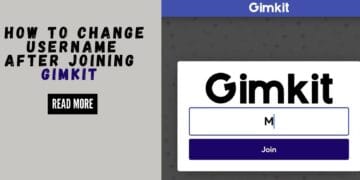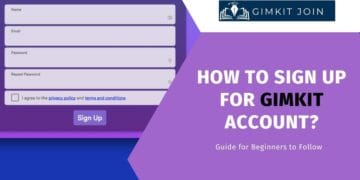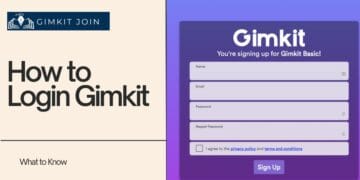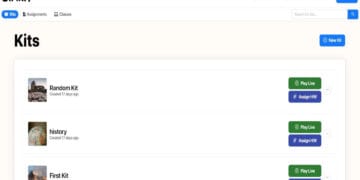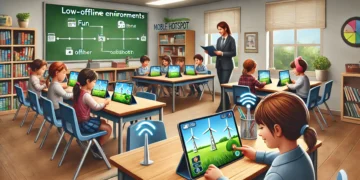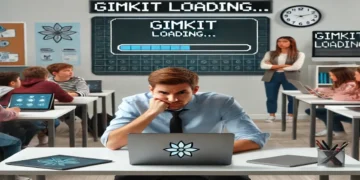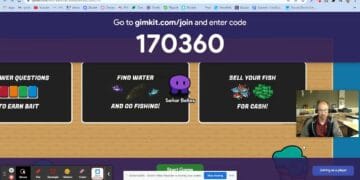For most of us, Gimkit is the ultimate review tool—a high-energy quiz game with a killer beat. You use it to prep for a test, quickly check for understanding, or just let students blow off some steam while reviewing a unit. But what if you could use it to build a world? To craft a narrative? To turn your students into authors?
In this guide, we’ll go beyond the typical quiz and show you how to use Gimkit creative writing as a powerful platform for fostering creativity and imagination. Whether you’re an ELA teacher or simply looking for an innovative way to approach gamified writing, this article will show you two main methods for teaching writing with Gimkit: a simple collaborative method and a more advanced interactive one.
Method #1: Collaborative Kit Stories with KitCollab
This is the simplest way to use Gimkit to get your students’ creative juices flowing. Think of it as a digital version of a chain story, but with a tech twist that keeps everyone on the same page (literally!). This approach is perfect for short, engaging warm-ups or for a class-wide writing project that everyone can contribute to.
The Concept
 Instead of answering multiple-choice questions, students use KitCollab to collaboratively build a story. Each student adds a new sentence or a new piece of the narrative, building on what the previous students have written. It’s a low-stakes, high-engagement activity that naturally introduces concepts of narrative structure and plot development.
Instead of answering multiple-choice questions, students use KitCollab to collaboratively build a story. Each student adds a new sentence or a new piece of the narrative, building on what the previous students have written. It’s a low-stakes, high-engagement activity that naturally introduces concepts of narrative structure and plot development.
The How-To
- Create a New Kit: Start a brand new kit and give it a creative title, like “The Mystery of the Missing Lunch” or “Adventure in the Forgotten Forest.”
- Enable KitCollab: From your Kit’s dashboard, enable the KitCollab feature. This gives your students a unique link to join and contribute.
- Start the Story: Begin the story yourself by adding the first question. Instead of asking a trivia question, provide the first sentence of your narrative. For example: “The old robot creaked to life in the abandoned junkyard.”
- Student Contributions: As students join, they will see a prompt to add their own questions. The key here is to have them use the “Text Input” question type. This allows for open-ended contributions. Each student must add the next line or two of the story.
- Curate in Real-Time: As a teacher, you have the power to approve or deny submissions in real-time. This allows you to guide the story away from distractions and keep it on track. The approved entries instantly appear on the screen, creating a live, unfolding story for the whole class to see.
Why It Works
 This activity provides a gentle introduction to Gimkit’s creative writing. It lowers the stakes for reluctant writers, as they’re only responsible for one small piece of a larger story. It also gives them ownership of the narrative and creates a sense of shared creativity, making the lesson far more engaging than a traditional worksheet.
This activity provides a gentle introduction to Gimkit’s creative writing. It lowers the stakes for reluctant writers, as they’re only responsible for one small piece of a larger story. It also gives them ownership of the narrative and creates a sense of shared creativity, making the lesson far more engaging than a traditional worksheet.
Method #2: The Ultimate Choose-Your-Own-Adventure with Gimkit Creative
If you want to create a truly immersive narrative, Gimkit Creative lessons are your sandbox. This isn’t about quizzes; it’s about building custom worlds from scratch. This method is the next frontier for Gimkit storytelling, allowing you to create your own interactive fiction experience.
The How-To: A Storytelling Sandbox
World Building: Creating the Setting
Every great story begins with a great setting. In Gimkit Creative, you can build a whole new world. Use different terrains (water, lava, grass) and props (trees, houses, furniture) to create a compelling environment.
- Are your students writing a spooky story? Build a spooky haunted mansion with a graveyard outside.
- Are they creating a fantasy story? Use terrain and props to design a bustling medieval town or a dark, enchanted forest.
- The possibilities are endless, and this part of the project is a fantastic way to teach Gimkit Creative world-building.
Character & Plot: Giving Your Story a Voice
Once your world is built, it’s time to bring it to life with characters and dialogue.
- Character Dialogue Boxes: Place a character device (like a robot or a wizard) and use the Character Dialogue feature. This allows you to write out what a character says in a story. This is the perfect tool for laying out the plot, introducing a quest, or giving the player crucial information.
- Pop-Up Call to Action: Use this device to create interactive prompts. For example, a pop-up could say, “The old wizard points to a glowing sword. Do you take it?”
Choices & Consequences: The “Choose Your Own Adventure”
This is where the magic of interactive fiction happens. You can use devices to give students meaningful choices that affect the story.
- Buttons & Teleporters: Place a button that asks a question like, “Do you enter the dark cave or follow the mysterious light?”
- Wiring the Narrative: If they press the “cave” button, a wire can send them to a Teleporter that takes them to a new part of the map with a challenge (like a puzzle). If they press the “light” button, a different wire takes them to a different part of the map with a different challenge. This is the core of a Gimkit choose your own adventure narrative.
The ultimate goal of this project isn’t to get a high score; it’s for students to reach one of the many possible endings of the story, making it a unique form of student-generated content.
The Writer’s Toolkit: Other Gimkit Ideas for ELA
Beyond the main methods, there are countless ways to use this powerful classroom technology to support a Gimkit for ELA curriculum.
Kit for Character Development
 Before students write, have them explore the intricacies of character. Create a standard Gimkit where each question focuses on a character’s traits, motivations, and backstory. For example, a question might be: “What is your character’s greatest fear?” or “What is their hidden talent?” This helps them think critically about their protagonist, antagonist, and secondary characters.
Before students write, have them explore the intricacies of character. Create a standard Gimkit where each question focuses on a character’s traits, motivations, and backstory. For example, a question might be: “What is your character’s greatest fear?” or “What is their hidden talent?” This helps them think critically about their protagonist, antagonist, and secondary characters.
Kit for Plot Structure
 Use a standard kit to review the elements of a story arc. Quizzing students on concepts like exposition, rising action, climax, and falling action before they begin their own writing projects reinforces their understanding of narrative structure. This is a great way to use Gimkit for a more traditional pedagogy while still keeping students engaged.
Use a standard kit to review the elements of a story arc. Quizzing students on concepts like exposition, rising action, climax, and falling action before they begin their own writing projects reinforces their understanding of narrative structure. This is a great way to use Gimkit for a more traditional pedagogy while still keeping students engaged.
Kit for Vocabulary & Setting
 Create a kit that focuses on the specific vocabulary students need for their world. For example, for a medieval story, the questions could be about words like “trebuchet,” “parchment,” or “jousting.” You can even use Gimkit Creative to create a world where students must find hidden objects that represent the vocabulary words they need for their story, making the learning process a literal scavenger hunt.
Create a kit that focuses on the specific vocabulary students need for their world. For example, for a medieval story, the questions could be about words like “trebuchet,” “parchment,” or “jousting.” You can even use Gimkit Creative to create a world where students must find hidden objects that represent the vocabulary words they need for their story, making the learning process a literal scavenger hunt.
Conclusion: Empowering Student Storytellers
Gimkit is an incredible tool for creative writing. The platform’s flexibility allows you to move far beyond its well-known quiz format. Whether you’re using KitCollab for a simple collaborative story or diving deep into the world-building of Gimkit Creative, you’re empowering your students to become authors. You’re turning a game into a canvas, and that’s the most powerful lesson of all.
By using Gimkit for narrative writing, you’re not just teaching learning outcomes; you’re building a love for storytelling. You’re proving that writing can be a shared adventure, a thrilling quest, and a deeply creative act.
How have you used Gimkit to teach storytelling or creative writing? Share your best ideas in the comments below!






